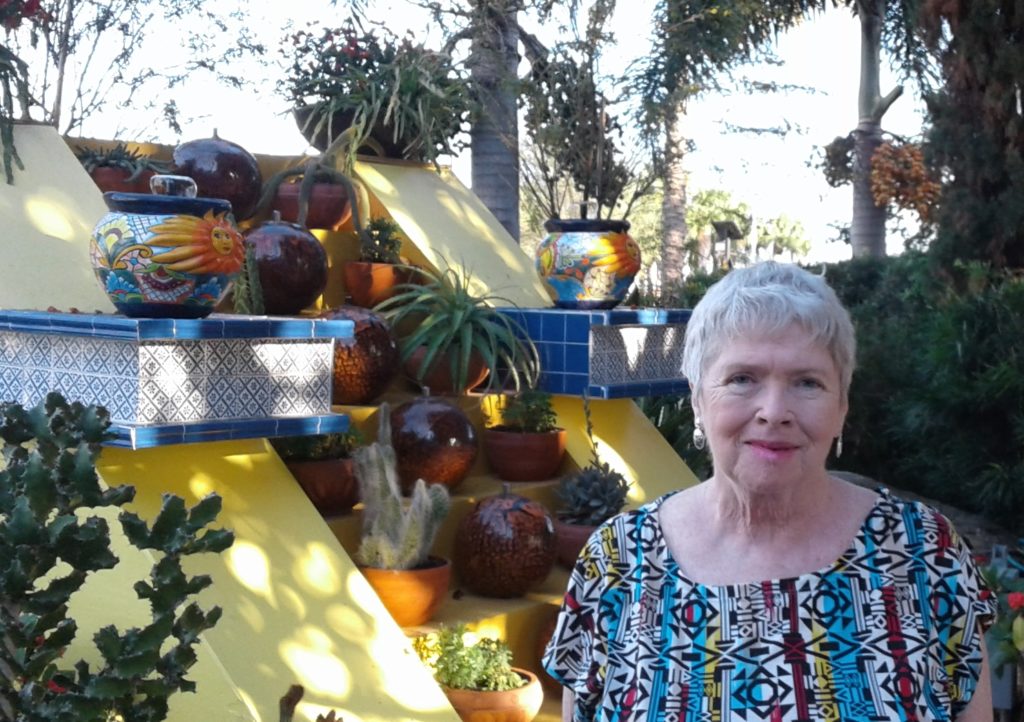Milling with the crowd of Christmas week visitors entering the Dali Museum on the waterfront in St. Petersburg, Florida, we wind our way up the museum’s iconic spiral staircase – described as a nod to surrealist Salvador Dali’s fascination with DNA. The staircase ends on the third floor where there is a permanent Dali collection and a current exhibit featuring “the most celebrated female artist,” Frida Kahlo.
The pair seems more than a match, enduring the war years and shimmering as stars of an avant garde art world. Museum photos document their mid-20th Century lives – revealing threads between celebrity and daring explorations the artists made of private struggles.
The entrance to the Kahlo exhibit is a wall of densely packed, colorful flowers that reflects the persona of a Mexican artist known for a passion for the natural world. With her arched, thick eyebrows that seem to form a single brow across her temple, Frida’s face appears in much of her art. We soon learn that passion seemed to have sustained her through immense physical pain and mental anguish before her death at 47.
Frida’s will is startling, considering the paintings and drawing of so many anguished turning points in her life. This is especially affecting when one pivots from a charming painting of the young adult Frida as a passenger aboard a city bus to a nearby drawing depicting an horrific accident that broke her body and threatened to break her spirit.
As if this torturous period wasn’t enough, years earlier, Frida endured the trauma of polio. Yet, illustrated pages of her childhood dream diary line a wall of the exhibit space and convey inward journeys Frida took to awaken what she called “her unencumbered self” - a part of her being untouched by her pain and driven to create.
Add to this her lifelong sorrow at being unable to bear a child and other suffering quintessentially feminine, and this viewer is left with more than a twinge of empathy. Still, Frida rises – as if on wings - and that may be the most important point of all.
At the end of the exhibit, we spiraled down the staircase and outdoors to the museum’s garden display of potted succulent and flowering plants reminiscent of those the artist cultivated. Inside and out, a marvel of Frida’s steel will to create - come what may – and manifest her reverence for nature.
I am taken by the notion of awakening an unencumbered self, especially when haunted by the memory of the disastrous 2016 presidential election and the prospect of chaos to come. Though the present reality does not rival the suffering Frida overcame, a sense of foreboding begs to be addressed from a place of calm.
What is a creative life, if not a refusal to settle for what appears to be real and a determination to make it what you will? To that end, I approach 2017 as I have any other year - as the 19th Century Transcendentalist Henry David Thoreau proposed: “If you advance confidently in the direction of your dreams and endeavor to live the life you imagine, you will meet with a success unknown in common hours.”
Henry’s words are like Frida’s paintings; far better than the life proposed by a reckless few who today appear to be assuming power over us – like an horrific accident or inescapable scourge - mindless of the pain they will inflict.
The future must be fashioned by the unencumbered self. I wish you well, dear reader, in discovering your place of calm and – come what may - pursuing your dreams.
Reggie Morrisey, December 31, 2016
